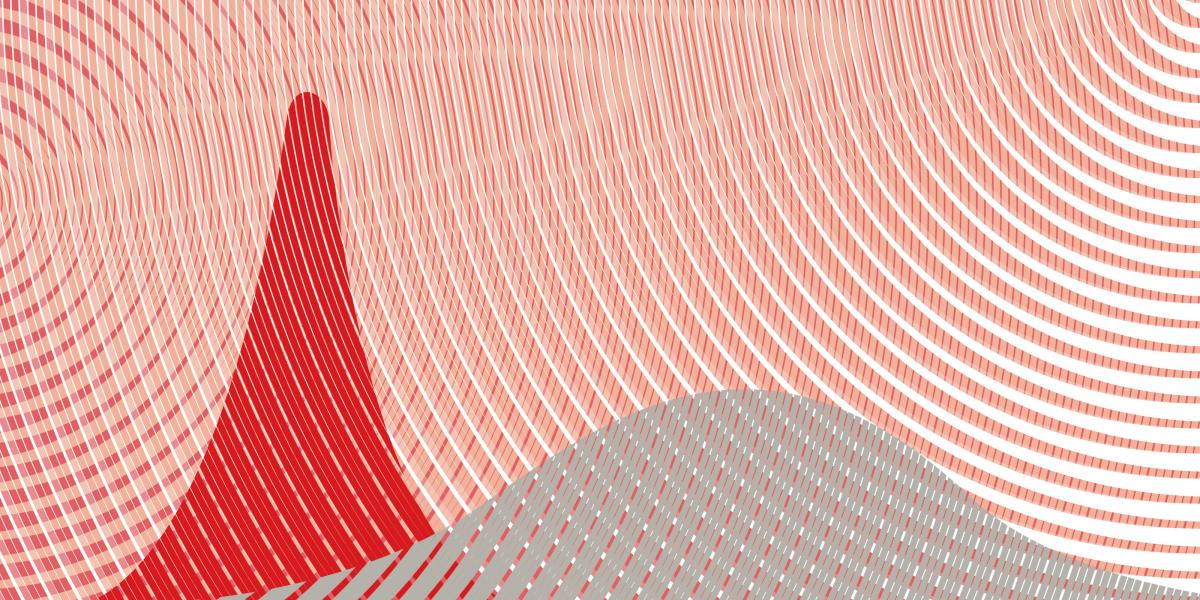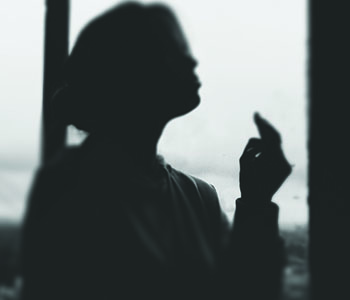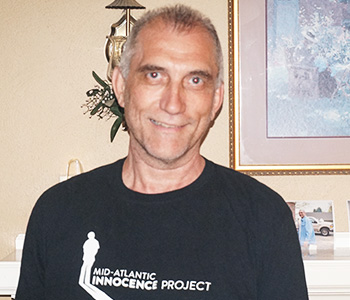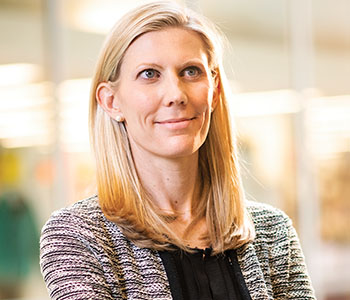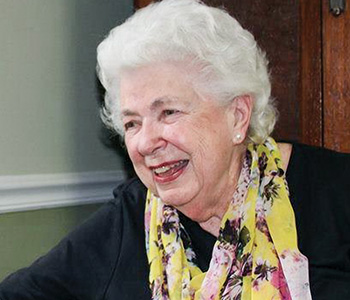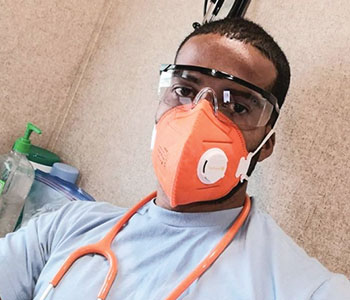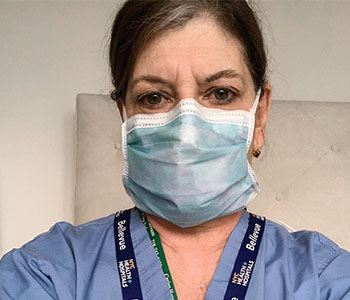Voices of the Vulnerable
For asylum seekers, the incarcerated, frontline doctors, and others, COVID-19 has made hard lives harder.
"Christina," 34
Sex worker | Southwest Baltimore
I’m losing at least $150 to $200 a day because of the stay-at-home order. I was renting a room for $500 a month. Because the motel owners knew we weren’t working on the street, they wanted all of the money up front.
I moved out April 12 or 13, and I’m in a ’bando [abandoned house]. You can’t secure your doors. You got busted windows. I’ve already had most of my clothes stolen. I don’t even have money to wash the couple of outfits that I have.
I have some regulars I still see, and I’m trying to get by on that. I wear a mask. A few of the regulars do, some don’t. If one of my regulars cancels, I don’t have money that day.
Right now, I need $60 a day [just to avoid heroin withdrawal]. If I only get $60, it’s either be well or eat. A lot of the dealers are taking advantage of the situation. After the stay-at-home order, within two to three days, $5 heroin pills went up to $10.
I’ve tried methadone before and did really well on it. I can’t get it now because I lost my ID, and the MVA is closed. I usually get food stamps. I was supposed to have a recon [reassessment] done in April. Because of COVID, that got canceled. I don’t have any food stamps.
A lot of girls have been robbing girls that are making money, stealing from people, stealing from grocery stores. Myself, I don’t believe in beating people up and stealing to provide for my needs—but I see why some of them are doing it. They have kids. They have to be well to take care of their kids, to go out and make money.
Matthew Horner, 51
Carpenter (formerly incarcerated) | York County, Pennsylvania
I was in North Branch Correctional Institution [in Maryland] from Thanksgiving 2008 until I was released on April 15, 2020. It’s a maximum security prison that holds about 1,250 men.
Normally, we have 90 people in chow hall twice a day. Middle of March, they eliminated that. Then they took the picnic tables, the pull-up bar, the water coolers, the basketball net out of the yard. Beginning of April, the prison staff started wearing masks and plastic shields. There were no masks for the inmates. The staff never explained anything to us. Communication-wise, they could have done better.
They would let us into the day room for a half hour. They had three bleach guys working 24 hours a day taking turns. The day room, the microwave, the telephone, the hot pot were all wiped down with bleach. I respected the levels of protection they were taking.
You would fight more with the person in your cell because you were locked up with them 23.5 hours a day. The cell—I measured it—is 10-foot-3 by 7. Normally you could go to the chow hall and yard to get away from each other.
I was in a cell with someone in his 70s. He was terrified. Every waking moment he would watch the TV and say, “If I get it, it’s going to be bad. I’m not going to get the care I need.”
There was one case of COVID while I was still inside. It was an outside contractor. I didn’t learn this until I was being released. A guard told me because now I’m no longer an inmate, I am a citizen.
Bonnielin Swenor, PhD ’13, MPH ’09; 41
Associate Professor, Johns Hopkins, and person with a visual disability | South Baltimore
On Friday, March 27, I was on a call with local policymakers about marginalized populations and the COVID response. I remember thinking, “I just don’t feel right.”
By late Saturday morning, I knew I was sick. My husband said, “You need to get tested.” I said, “How would I get there?” I was diagnosed with retinal disease in 2005, and I have been losing my vision since then. I stopped driving more than a decade ago.
I get to work every day with Uber, but it didn’t seem appropriate for an epidemiologist to get in a car and possibly expose someone. I knew there was a good chance if I had COVID-19, my young children and husband had been exposed, so having someone come stay with my kids while my husband drove me felt inappropriate.
The other option was for all of us to go. But if my family hadn’t been exposed to COVID, they certainly would be in the car.
All the options were bad. I decided not to get tested.
Not getting tested was the right decision, but I felt immense guilt that I couldn’t follow through as a good epidemiologist should. I know how important the data are. I had to violate my own code.
I’ve used this experience to see the bigger picture. This situation is highlighting inequities for people with disabilities. The true impact of me not being counted and the other people with a disability not being counted is it’s affecting our COVID-19 estimates and therefore our response. We’re not surveilling disability. We ask people their ethnicity, race, gender, and age in a health care setting. We don’t do that for disability.
It’s a silent disparity. No one is paying attention.
Dorothy “Dot” Sheppard, 96
Senior home resident | Aspen Hill, Maryland
They say getting older is not for sissies, and that is so true. We’re in lockdown, and I wouldn’t wish this on anybody.
We’re all concerned about COVID and waiting for the other shoe to drop. So far, we’ve only had two cases, and that was some time ago. I think everybody in this place is depressed. Why not?
There is a lovely dining room that we all would go to, but now we have to take meals in our rooms. They’re really very careful here. They have sanitizers all over the place. It does disturb me that we have so much food and then I read in the paper where people are going hungry.
Freedom is what I miss most. Never since I was a little kid has anybody told me what to do. But right now, you have to do what they say. You have no alternative.
Our hairdresser closed down at the beginning of all this business, and we can’t go out to get our hair done. I know that seems like a minor thing. For guys, it is.
We’re supposed to wear masks and stay 6 feet apart. That’s kind of hard to do, like when you pass somebody in the hall. They used to show a movie every night, which they had to cancel. We are all so bored.
Never in my lifetime did I ever think the United States would be in this situation.
Dairon Elisondo Rojas, MD, 29
Asylum seeker and migrant camp doctor | Matamoros, Mexico
Translated from Spanish
Conditions here are really bad. People live in tents in a dirt field with no security. There is a river nearby where a lot of people clean themselves, but the river is contaminated so there’s a lot of disease. People are desperate, but they have to be here because of MPP [Migrant Protection Protocols enacted by the U.S. that mandate asylum seekers remain in Mexico]. Also, since COVID, immigration hearings are being postponed. Mine has been rescheduled once already and probably will be again.
Most people here are from Central America—Honduras, El Salvador, and Guatemala. They’re all ages—families and old people—maybe 1,500 in all. I am part of a medical team for Global Response Management [an international medical NGO]. There are two other doctors and a nurse who are Cuban asylum seekers like me.
We are worried about COVID. If one resident from the camp gets it, all the camp is going to be affected. A lot of residents understand the dangers, but many don’t. We can’t compel people not to go to the city to buy things. We have put in some handwashing stations and are working to get everyone to wear a mask and go to the clinic if they have any symptoms. If we have a patient with a cough, we can get them into isolation and tested. No one has tested positive yet, thank God. It would be terrible.
The work helps keep my mind off things—the responsibility of a doctor is saving lives.
Judith Salerno, MD, MS; 68
Retired clinician called back to patient care | New York, New York
As president of the New York Academy of Medicine, I do advocacy work and had not seen patients for five years. But from my New York apartment, I could hear the ambulances carrying COVID patients. When the governor put out a call to retired health professionals, I didn’t hesitate. A special call came to assist the public hospital system. That’s exactly where I had to be. Within a week, I was working at Bellevue, the largest public hospital in the city.
I worked with palliative care teams for COVID intensive care units. And during my first three weeks of service, 100% of my patients were intubated and many were in medically induced comas. I never spoke to most of my patients. What I did was take the medical information from morning rounds and call their families. They couldn’t visit and were starved for information. It was as if they were my patients as well.
I often had to deliver very dire news: “Your loved one is not getting better. They’ve been on a ventilator for a month, and I’m concerned that they will die.” I had to use that word because every family was hoping that their loved one would be the miracle patient seen on TV walking out of the hospital. I can only speak for the patients I followed, but the overwhelming number of them died.
Of the well over 100 patients I saw during my five-week service, only one was not a person of color. I saw the pandemic of racism—the inequities in care systems and how these communities are disadvantaged.
Right now, we are experiencing the enormous tensions over the death of George Floyd. We’re in another crisis. Now I hear those sirens out my window.
